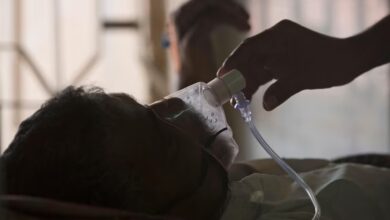Children’s nearsightedness development is slowed by eye drops
The first pharmacological treatment to delay the start of nearsightedness in children may be forthcoming, according to the results of current clinical study.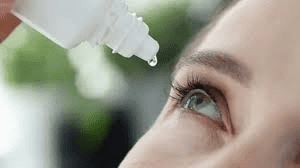
The three-year research discovered that a modest dosage of atropine, a medication used to dilate pupils, was more effective than a placebo in preventing changes in eyeglass prescriptions and eye elongation in nearsighted children between the ages of 6 and 10.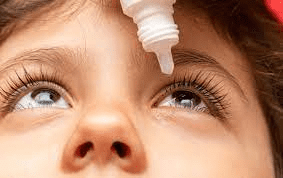
Myopia, or nearsightedness, is caused by this elongation and begins in young children and progresses throughout adolescence before levelling off for the majority of individuals. In addition to need lifelong vision correction, nearsightedness increases the chance of developing macular degeneration, cataracts, glaucoma, retinal detachment, and other conditions later in life. Most corrective lenses do little to slow the course of myopia.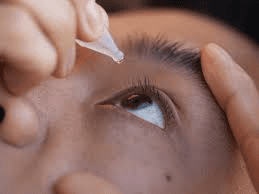
According to main research author Karla Zadnik, professor and dean of the College of Optometry at The Ohio State University, “the idea of keeping eyes smaller is not just so people’s glasses are thinner – it would also be so that they don’t suffer from visual impairment in their 70s.”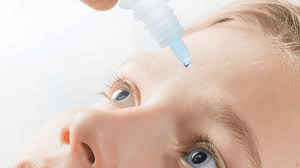
“As a 35-year member of the myopia research community, this is intriguing work. For many years, we’ve discussed control and therapy,” she stated. And it’s encouraging to imagine that millions of youngsters who we now know will have myopia may have alternatives in the future.
Today (June 1, 2023) in JAMA Ophthalmology, the findings of the CHAMP (Childhood Atropine for Myopia Progression) experiment are released.
Around the globe, one in three adults has nearsightedness, and by 2050, myopia is expected to affect 50% of people. Although one contact lens with federal approval may reduce the advancement of nearsightedness, neither the United States nor Europe have authorised any pharmacological medications to treat myopia.
Atropine’s potential as a treatment for myopia in humans was first overlooked because of the drug’s full-strength effects on near vision and worries about pupil dilation. However, animal research conducted years ago suggested that atropine may be able to inhibit the development of the eye. Recent studies have shown that a modest dosage of atropine could be the answer.
In a recent phase 3 study that was double-masked and randomly assigned, the safety and efficacy of two low-dose medications with atropine concentrations of either.01% or.02% were compared to a placebo. One daily drop per eye at night was administered to each of the 489 kids aged 6 to 10 who were evaluated for the drug’s efficacy. This reduced the disruption of any blurring effects that atropine could have on vision.
The solution containing.01% atropine produced the most notable benefits at all time points compared to placebo, which caught the researchers off guard. Although the.02% atropine formulation slowed the development of myopia more effectively than the placebo, the effects were less reliable.
“The.01% story is clearer and more obvious,” Zadnik said, “in terms of significantly slowing both the growth of the eye and then producing a lower glasses prescription.”
Since “the field is actually moving towards axial elongation being as important as, or more important than, the glasses prescription in terms of the most meaningful outcome,” she added, including a measure of the eye’s development was crucial to the research. “Measuring the eye growth directly is really important if we’re trying to slow eye growth to prevent bad outcomes for people in their 80s.”
A larger sample of 573 individuals, which comprised youngsters as young as 3 and as old as 16, was used to evaluate the medications’ safety. The two low-dose preparations were both secure and well-tolerated. Although there were few reports of these adverse effects, the most frequent ones were light sensitivity, allergic conjunctivitis, eye irritation, dilated pupils, and impaired vision.
The CHAMP trial, which had a large, varied population drawn from 26 clinical locations in North America and five nations in Europe, was the first study of low-dose atropine to include placebo controls for three years. In a second phase of the experiment, scientists are assessing how the eyes react once the therapy is finished.
In order to make it more convenient and avoid contamination, the experimental medication is packaged in single-use containers. It is prepared without preservatives. Preservatives that might cause dry eye and corneal irritation may be present in off-label low-dose atropine that is presently available from compounding pharmacies, researchers discovered.
Vyluma, a New Jersey-based biopharmaceutical firm in the research stage with a focus on pharmacological therapies for refractive defects of the eye, is the company that makes the experimental medicine under investigation in the CHAMP study. Vyluma, a division of Nevakar Inc., funded the study, filed a New Drug Application with the FDA to request clearance in the U.S., and has collaborated with two businesses to market the medicine abroad.
As a compensated expert consultant for Vyluma, Zadnik directed the research. Ohio State associate professor Jennifer Fogt contributed to the trial as well. The CHAMP trial group investigators were also represented by co-authors Erica Schulman of the SUNY College of Optometry, Ian Flitcroft of the Centre for Eye Research in Dublin, Ireland, Louis Blumenfeld of Eye Physicians of Central Florida, Tung Fong, Eric Lang, Houman Hemmati, and Simon Chandler of Vyluma.






